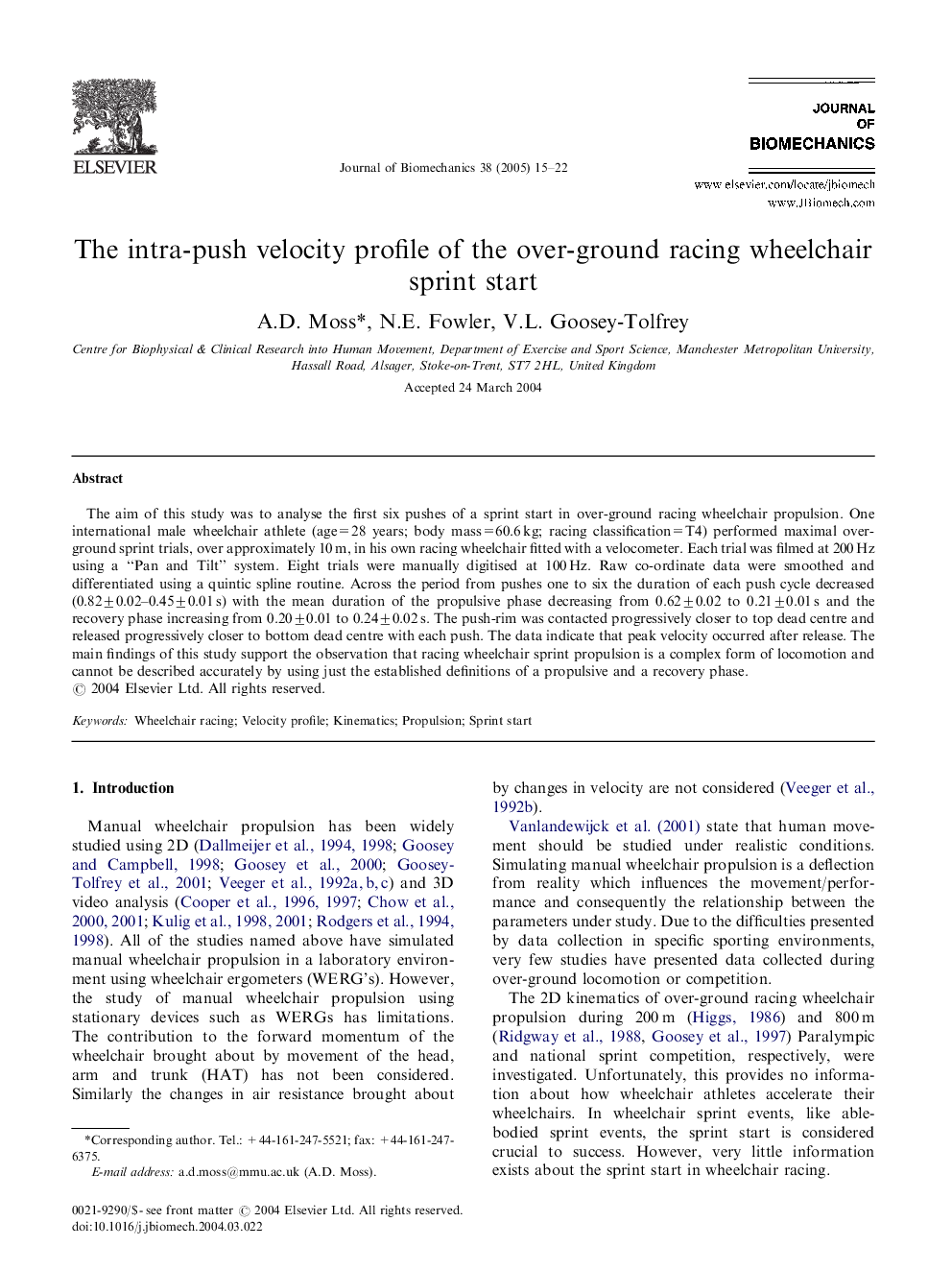| Article ID | Journal | Published Year | Pages | File Type |
|---|---|---|---|---|
| 10434552 | Journal of Biomechanics | 2005 | 8 Pages |
Abstract
The aim of this study was to analyse the first six pushes of a sprint start in over-ground racing wheelchair propulsion. One international male wheelchair athlete (age=28 years; body mass=60.6 kg; racing classification=T4) performed maximal over-ground sprint trials, over approximately 10 m, in his own racing wheelchair fitted with a velocometer. Each trial was filmed at 200 Hz using a “Pan and Tilt” system. Eight trials were manually digitised at 100 Hz. Raw co-ordinate data were smoothed and differentiated using a quintic spline routine. Across the period from pushes one to six the duration of each push cycle decreased (0.82±0.02-0.45±0.01 s) with the mean duration of the propulsive phase decreasing from 0.62±0.02 to 0.21±0.01 s and the recovery phase increasing from 0.20±0.01 to 0.24±0.02 s. The push-rim was contacted progressively closer to top dead centre and released progressively closer to bottom dead centre with each push. The data indicate that peak velocity occurred after release. The main findings of this study support the observation that racing wheelchair sprint propulsion is a complex form of locomotion and cannot be described accurately by using just the established definitions of a propulsive and a recovery phase.
Keywords
Related Topics
Physical Sciences and Engineering
Engineering
Biomedical Engineering
Authors
A.D. Moss, N.E. Fowler, V.L. Goosey-Tolfrey,
